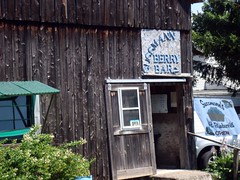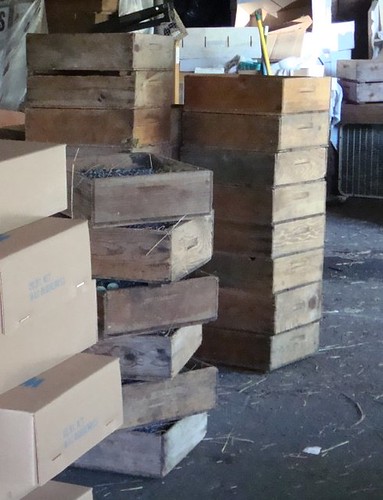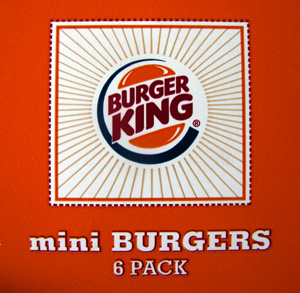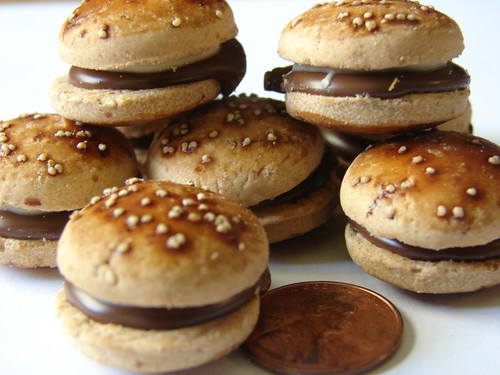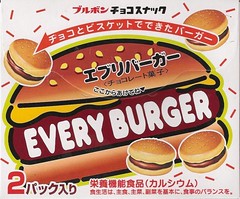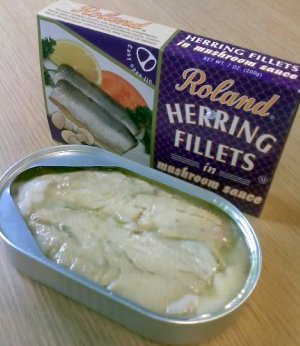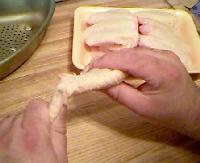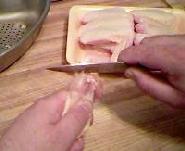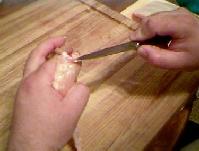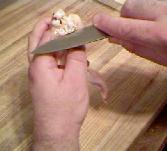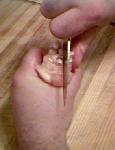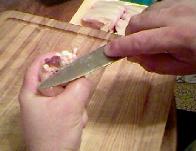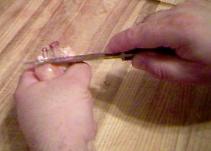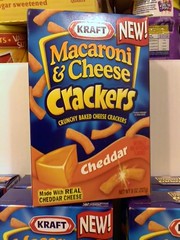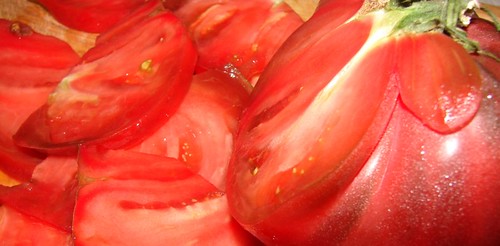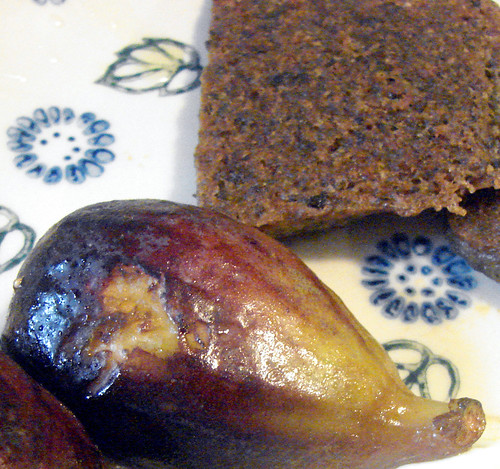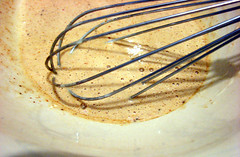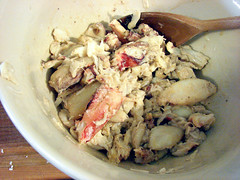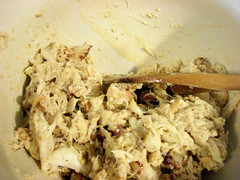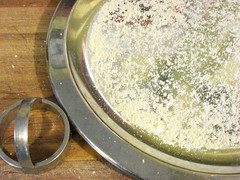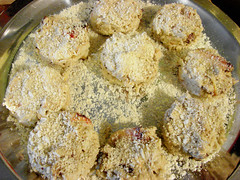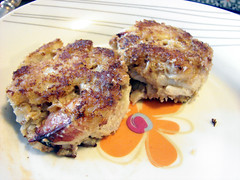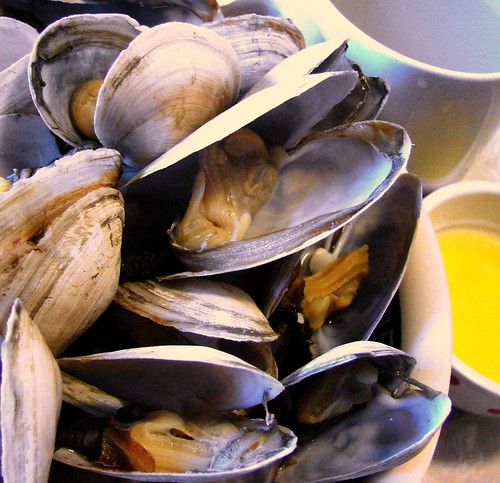
New England soft-shelled clams - Steamers - are one of my all-time favorite foods. They're easy to prepare, they're delicious, and they're perfect as either an appetizer or as a light meal all by themselves.
Steamers are sandier than their hard-shelled cousins, so there's a bit more preparation involved. I dump them into a big colandar and then gently scrub them all around - including the edges - with a stiff vegetable brush. Discard clams with broken shells, or those that don't close up tightly when you grab and scrub them, or any that stink. (Clams smell fresh and briny, like the salt spray from a cold wave breaking on the rocks of a North Atlantic shore. If you get any that smell like low tide at the salt flats, chuck it.) As I scrub each one, it gets placed in a large Dutch oven and set aside. When all of the clams are scrubbed, I add a bit of fresh cool water to the pan - not too much, and no salt, they'll have plenty of their own - cover, and put the pan over medium heat to let the little bivalved morsels steam. When the clams have yawned open in their sauna, they're ready to eat. I serve them with melted butter and a mug of the clam broth from the pan. Swish the clams in the broth before dipping them in butter and any remaining grit you couldn't scrub away earlier is left behind.
Somehow, word spread around that steamers were "better" if they were allowed to set a while before cooking, sprinkled with cornmeal. Supposedly, the clams would eat the cornmeal and purge out whatever clam food they'd been eating, and this would make them "sweeter." I've tried that, and there are a couple problems with it.
The clams don't really eat much cornmeal in the time before scrubbing and cooking, if they eat any at all. Checking out the bellies of sprinkled and unsprinkled clams shows hardly any cornmeal in their stomachs - certainly not enough to replace all the other stuff in there.
It adds an extra step to the preparation/cooking process. The clams can't be steamed with the cornmeal still in the pan with them - cornmeal expands and gets thick when it's cooked, so the pan has to be dumped and the clams and pan rinsed out and the water replaced.
And finally, soaking in fresh water doesn't do the clams any good. Their "feet" - that funny-looking tube thingy that sticks out of their shell - gets swollen up and sick-looking from prolonged exposure to fresh water. You're better off just scrubbing the clams and steaming them, without any intermediate tricks.
Steamers are sandier than their hard-shelled cousins, so there's a bit more preparation involved. I dump them into a big colandar and then gently scrub them all around - including the edges - with a stiff vegetable brush. Discard clams with broken shells, or those that don't close up tightly when you grab and scrub them, or any that stink. (Clams smell fresh and briny, like the salt spray from a cold wave breaking on the rocks of a North Atlantic shore. If you get any that smell like low tide at the salt flats, chuck it.) As I scrub each one, it gets placed in a large Dutch oven and set aside. When all of the clams are scrubbed, I add a bit of fresh cool water to the pan - not too much, and no salt, they'll have plenty of their own - cover, and put the pan over medium heat to let the little bivalved morsels steam. When the clams have yawned open in their sauna, they're ready to eat. I serve them with melted butter and a mug of the clam broth from the pan. Swish the clams in the broth before dipping them in butter and any remaining grit you couldn't scrub away earlier is left behind.
Somehow, word spread around that steamers were "better" if they were allowed to set a while before cooking, sprinkled with cornmeal. Supposedly, the clams would eat the cornmeal and purge out whatever clam food they'd been eating, and this would make them "sweeter." I've tried that, and there are a couple problems with it.
The clams don't really eat much cornmeal in the time before scrubbing and cooking, if they eat any at all. Checking out the bellies of sprinkled and unsprinkled clams shows hardly any cornmeal in their stomachs - certainly not enough to replace all the other stuff in there.
It adds an extra step to the preparation/cooking process. The clams can't be steamed with the cornmeal still in the pan with them - cornmeal expands and gets thick when it's cooked, so the pan has to be dumped and the clams and pan rinsed out and the water replaced.
And finally, soaking in fresh water doesn't do the clams any good. Their "feet" - that funny-looking tube thingy that sticks out of their shell - gets swollen up and sick-looking from prolonged exposure to fresh water. You're better off just scrubbing the clams and steaming them, without any intermediate tricks.


